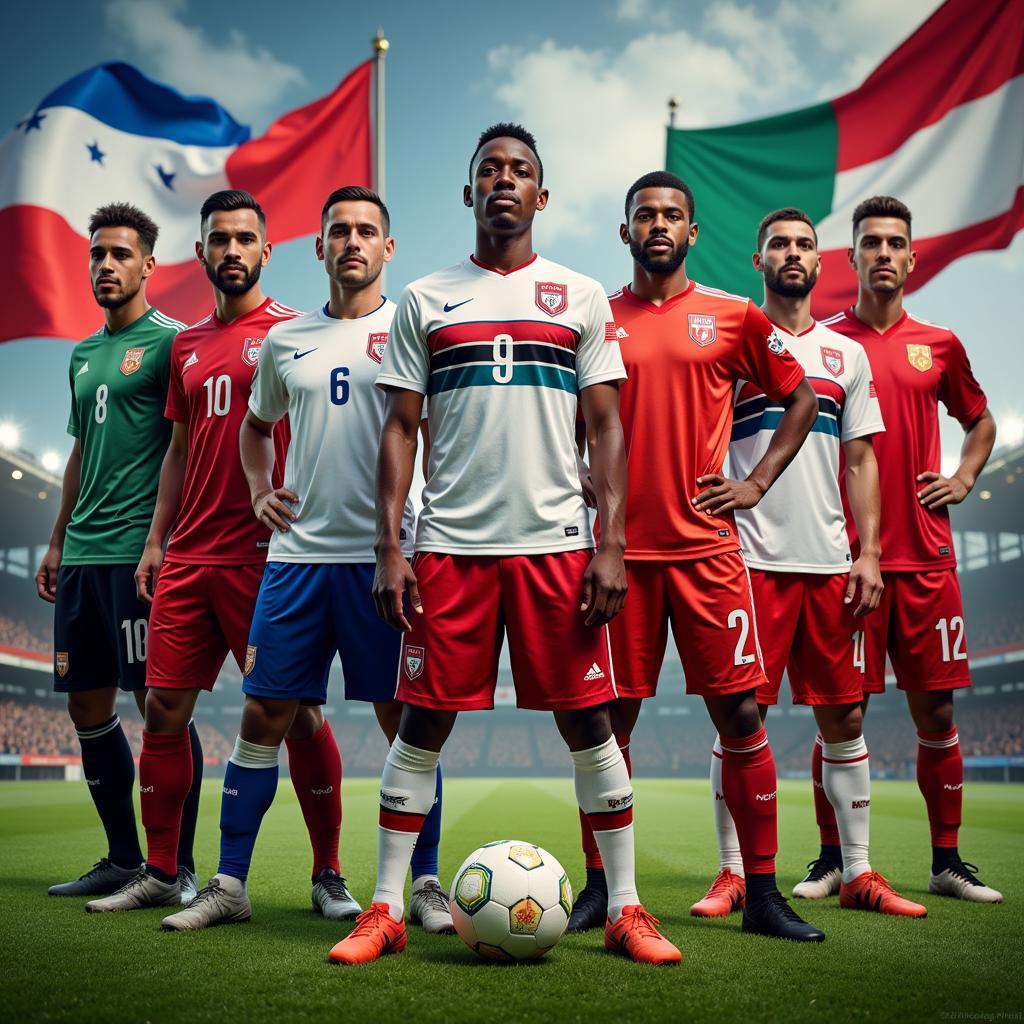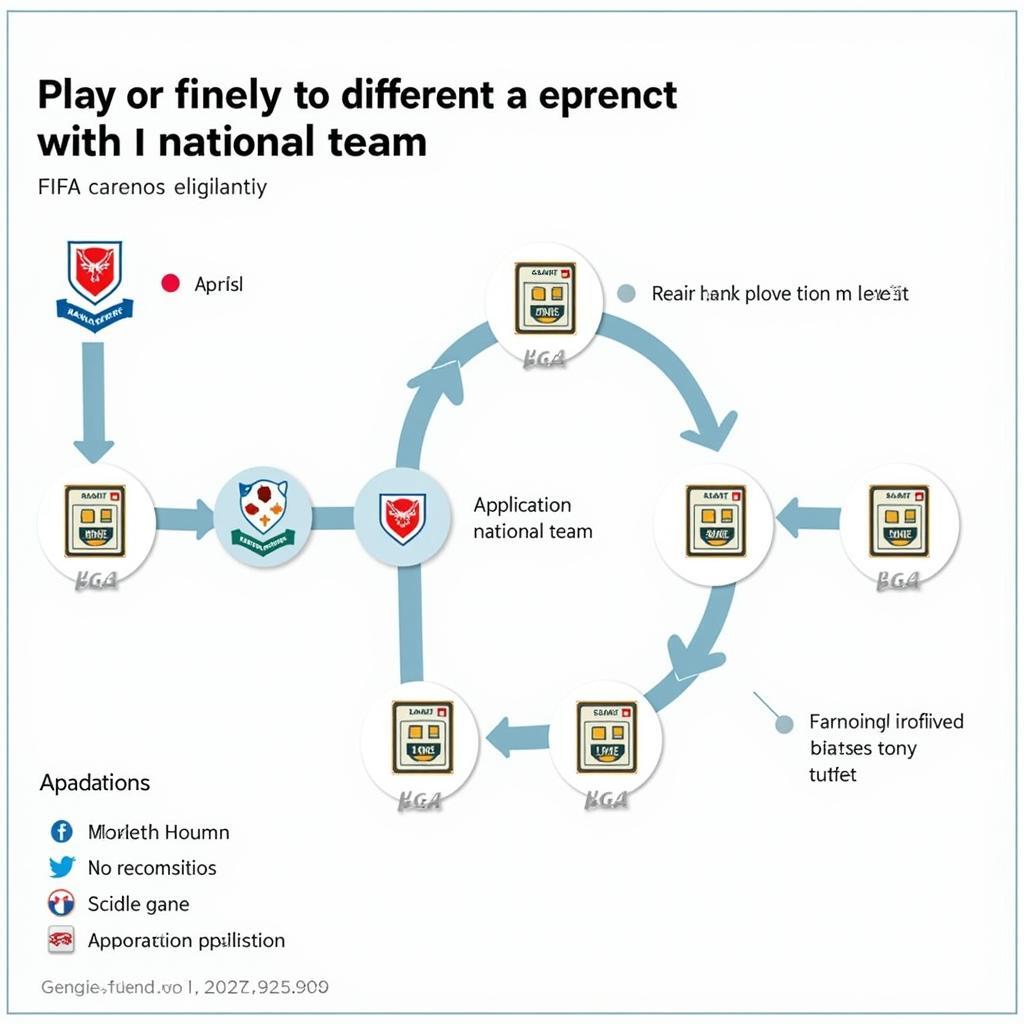Players Who Have Played for Two National Teams: A Deep Dive
January 11, 2025Football, a sport of passion and loyalty, often sees players dedicating their careers to a single nation. However, there are unique circumstances that lead some athletes to represent more than one country on the international stage. This article explores the fascinating world of players who have played for two national teams, delving into the rules, motivations, and notable examples throughout history.  Footballers with Dual Nationality
Footballers with Dual Nationality
FIFA Regulations and Eligibility Criteria
Switching national teams isn’t a simple matter. FIFA, football’s governing body, has specific regulations to ensure fairness and prevent opportunistic changes. A player’s eligibility to represent a nation is primarily determined by their nationality, which can be acquired through birth, descent, or naturalization. However, once a player has made a competitive senior appearance for one country, switching becomes more complex.
One key rule revolves around competitive appearances. If a player has played in a competitive FIFA match, like a World Cup qualifier or continental championship, they are generally tied to that nation. However, there are exceptions, such as players representing a non-FIFA recognized team before joining a FIFA member. Another exception applies to players who hold multiple nationalities. xem số áo cầu thủ They might be eligible to switch if they haven’t played a competitive senior match for their first nation and meet certain criteria related to their other nationality.
Understanding the Nuances of the Rules
The rules surrounding eligibility can be intricate, involving factors like age at the time of representing a previous nation, the nature of the matches played, and the specific regulations of different confederations. For example, a player representing a nation at youth level may still be eligible to switch at the senior level under certain circumstances. The process often involves official applications and approvals from FIFA.
 FIFA Eligibility Rules for National Teams
FIFA Eligibility Rules for National Teams
Motivations Behind Switching National Allegiance
Why would a player choose to represent a different nation? The reasons are varied and often personal. Some players might feel a stronger connection to their ancestral homeland or seek greater opportunities to play at the highest level. mạnh hùng cầu thủ A player facing stiff competition for a spot in a strong national team might opt for a nation where they have a better chance of regular playing time. Family ties, cultural identity, and political considerations can also play a role.
Sometimes, the opportunity to participate in major tournaments, like the World Cup, can be a significant motivator. If a player’s current national team has limited prospects of qualifying, they might seek a switch to a nation with a stronger chance of reaching the global stage.
The Impact of Personal Circumstances
Personal circumstances, such as migration or family relocation, can also influence a player’s decision. Growing up in a different country than their birthplace can foster a sense of belonging and lead a player to identify more strongly with their adopted nation.
Notable Examples of Players Representing Two Nations
Several prominent footballers have represented two different nations. One example is Diego Costa, who played for Brazil in friendlies before switching to Spain, citing a stronger sense of belonging. Another case is Alfredo Di Stéfano, who represented Argentina, Colombia, and Spain, reflecting a more complex situation involving the rules of the time. These examples highlight the diversity of circumstances that lead players to switch national teams. cầu thủ vũ phong
Conclusion: Navigating the Complexities of Dual Nationality in Football
The issue of players representing two national teams showcases the intricate interplay of regulations, personal motivations, and national identity in the world of football. While the rules are designed to maintain order and prevent opportunistic switches, they also acknowledge the complex realities of players with dual nationalities. cầu thủ giá ảo Ultimately, the decision to switch national teams is a personal one, often shaped by a combination of factors that reflect the individual’s background, aspirations, and sense of belonging.
FAQ
- Can a player switch back to their original national team after playing for another country?
- What is the process for applying to FIFA to switch national teams?
- Are there any age restrictions for switching national teams?
- How do FIFA regulations address players who represented non-FIFA recognized teams?
- What happens if a player’s nationality changes after they have already represented a national team?
- Can a player represent two different nations at youth and senior levels?
- What are the implications of switching national teams for a player’s career?
For further information on talented footballers, you can check out cầu thủ hàn quốc son heung min.
When you need help, contact us.
Phone: 0396443476
Email: [email protected]
Address: 23 Tháng 3, Đắk Nia, Gia Nghĩa, Đắk Nông, Việt Nam.
Our team will assist you 24/7.